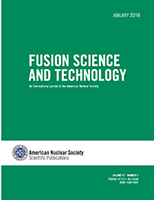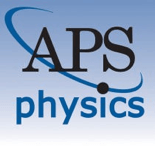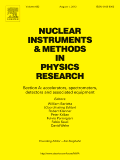
NUCLEAR INSTRUMENTS & METHODS IN PHYSICS RESEARCH SECTION B-BEAM INTERACTIONS WITH MATERIALS AND ATOMS
Scope & Guideline
Connecting Theory and Experiment in Nuclear Research
Introduction
Aims and Scopes
- Ion Beam Interactions with Materials:
The journal emphasizes the study of how ion beams interact with various materials, exploring the fundamental mechanisms behind these interactions and their implications for material properties and applications. - Nuclear Reaction Studies:
Research on nuclear reactions induced by ions, including cross-section measurements and reaction dynamics, is a core aspect of the journal, contributing to the understanding of nuclear processes. - Radiation Effects on Materials:
The journal features studies on the effects of radiation on different materials, focusing on how these effects influence material performance, structural integrity, and potential applications in various fields. - Advanced Characterization Techniques:
Papers often discuss advanced characterization techniques such as ion beam analysis (IBA), Rutherford backscattering spectrometry (RBS), and particle-induced X-ray emission (PIXE), enabling detailed material analysis. - Computational Modeling and Simulations:
The journal includes significant contributions in computational modeling and simulations to predict ion beam interactions, energy deposition, and radiation damage, complementing experimental findings. - Applications in Medicine and Industry:
Research addressing the applications of ion beams in medical therapies, such as cancer treatment and diagnostics, as well as in industrial processes like materials modification, is also a focus area.
Trending and Emerging
- Machine Learning and Data Analysis:
The incorporation of machine learning techniques for data analysis, particularly in predicting outcomes and optimizing experimental setups, is gaining traction, reflecting a broader trend in scientific research. - Nanostructured Materials:
Research focusing on the effects of ion beams on nanostructured materials and the creation of new nanomaterials through ion implantation is increasingly prominent, highlighting the relevance of nanotechnology. - Radiation Therapy Innovations:
There is a noticeable increase in studies related to advancements in radiation therapy techniques, including the use of ion beams for cancer treatment, indicating a strong interest in medical applications. - Environmental and Biological Applications:
Emerging themes include the study of environmental impacts and biological applications, such as the effects of radiation on biological materials and ecosystems, which reflect a growing interdisciplinary approach. - Advanced Energy Materials:
Research on energy materials, particularly those modified or analyzed using ion beams for applications in batteries and photovoltaics, is on the rise, aligning with global energy sustainability efforts.
Declining or Waning
- Traditional Nuclear Physics:
Research focused solely on traditional nuclear physics concepts, such as basic nuclear structure and decay processes, seems to be less prevalent, with a noticeable shift towards applied and interdisciplinary studies. - Basic Material Science Studies:
There appears to be a decline in publications centered solely on basic material science without a clear connection to beam interactions or radiation effects, as more applied research gains traction. - Conventional Radiation Detection Methods:
Papers on conventional radiation detection methods, particularly those that do not integrate novel technologies or advanced materials, are becoming less common in favor of more innovative approaches. - Single-Element Analysis Techniques:
Research focused solely on single-element analysis techniques is declining, as there is a growing preference for studies that employ multimodal or integrated analytical methods.
Similar Journals

Plasma
Exploring New Horizons in Engineering and PhysicsPlasma is a leading open-access journal published by MDPI, devoted to the exploration and advancement of knowledge in the fields of engineering, physics, and materials science. Established in 2018, this journal provides a vital platform for researchers, professionals, and students to disseminate original findings and critical reviews related to plasma science, its applications, and its interdisciplinary aspects. With an E-ISSN of 2571-6182, Plasma actively promotes open access to ensure that research is widely accessible, reinforcing its commitment to accelerating scientific communication and collaboration across global communities. The journal enjoys respectable rankings in Scopus, with a notable position in Engineering, Physics and Astronomy, and Materials Science categories, making it an essential resource for those seeking to remain at the forefront of plasma research. Covering a range of topics until 2024, Plasma invites cutting-edge contributions that push the boundaries of understanding in this dynamic field.

INSTRUMENTS AND EXPERIMENTAL TECHNIQUES
Exploring Cutting-Edge Methodologies in Physics and EngineeringINSTRUMENTS AND EXPERIMENTAL TECHNIQUES is a renowned academic journal dedicated to the field of instrumentation and experimental methodologies within physics and engineering. Published by MAIK NAUKA/INTERPERIODICA/SPRINGER, this journal serves as a vital platform for disseminating innovative research findings, detailed experimental techniques, and advancements in instrumentation technologies. Operating since its inception in 1968, it has established itself as a reputable source for scholars and industry professionals, though it currently holds a category quartile ranking of Q4 in Instrumentation based on the 2023 metrics. With an ISSN of 0020-4412 for print and E-ISSN of 1608-3180 for electronic formats, the journal is accessible to a global audience, offering crucial insights that can lead to significant advancements in experimental approaches across various scientific domains. Despite a current Scopus ranking placing it in the lower percentile, the journal continues to contribute to the ongoing discussions and developments in instrumentation, making it an essential read for researchers, professionals, and students eager to enhance their knowledge and expertise in this specialized area.

FUSION SCIENCE AND TECHNOLOGY
Leading the charge in multidisciplinary fusion research.FUSION SCIENCE AND TECHNOLOGY is a leading peer-reviewed journal published by Taylor & Francis Inc., dedicated to the advancement of knowledge in the fields of nuclear science, engineering, and fusion technology. With an impact factor that reflects its growing significance, this journal provides a platform for innovative research that addresses the challenges and opportunities within Civil and Structural Engineering, Materials Science, Mechanical Engineering, and Nuclear Energy and Engineering. Its open access option facilitates wider dissemination of groundbreaking research, enhancing visibility and accessibility for researchers, professionals, and students alike. As a member of the Q2 and Q3 Quartiles across various categories—demonstrating its reputable standing among peers—the journal plays a crucial role in fostering collaboration and sharing the latest scientific discoveries in fusion and related technologies from 2001 until 2024. This makes it an essential resource for anyone engaged in the multidisciplinary aspects of fusion science, contributing to the development of sustainable energy solutions.

Plasma and Fusion Research
Igniting Innovation in Plasma and Fusion ResearchPlasma and Fusion Research is a pivotal journal within the realm of plasma science and nuclear fusion, published by the Japan Society of Plasma Science and Nuclear Fusion Research. With an ISSN of 1880-6821, this journal serves as a vital platform for disseminating significant research findings and advancements from Japan and around the globe. Operating since 2006, it has steadily contributed to the field, reflected in its recognition as a Q3 journal in Condensed Matter Physics for the year 2023 and its ranking of #383 out of 434 in the Scopus categories, placing it in the 11th percentile. Although it currently does not offer open access, the journal's commitment to quality research makes it essential reading for researchers, professionals, and students keen on exploring the complexities of plasma dynamics, fusion technology, and their applications in energy production. Situated in Nagoya, Japan, the journal fosters a collaborative environment aimed at pushing the boundaries of knowledge in plasma physics and enhancing the understanding of fusion processes.

Nuclear Materials and Energy
Bridging Research and Application in Nuclear EnergyNuclear Materials and Energy is a premier open-access journal published by Elsevier, dedicated to the dynamic fields of nuclear science and materials engineering. Since its inception in 2015, the journal has made significant strides in disseminating cutting-edge research, establishing itself as a vital resource for researchers and professionals alike. With a commendable impact factor and ranked in the Q2 category for both Materials Science (miscellaneous) and Nuclear and High Energy Physics, and impressively in Q1 for Nuclear Energy and Engineering in 2023, Nuclear Materials and Energy stands out in the academic community. This journal aims to bridge the gap between fundamental research and practical applications, promoting innovative solutions in the efficient utilization of nuclear materials and energy technologies. Open access since 2015, the journal ensures wide dissemination and accessibility of crucial findings, making it an essential platform for advancing knowledge and fostering collaboration in these pivotal fields.

PHYSICAL REVIEW C
Connecting Researchers with Groundbreaking FindingsPHYSICAL REVIEW C is an esteemed journal published by the American Physical Society, dedicated to advancing knowledge in the fields of nuclear and high-energy physics. With a proud ISSN of 2469-9985 and an E-ISSN of 2469-9993, it has established itself as a leading journal, currently ranked in the Q1 category for its field in 2023, positioning itself in the top tier of scholarly publications. Based in the heart of the United States, at One Physics Ellipse, College Park, MD, PHYSICAL REVIEW C is known for its rigorous peer-review process and is a vital platform for researchers to share their pioneering findings. As part of a prestigious lineup backed by an impressive impact factor, this journal garners significant attention, reflected in its Scopus ranking as #18 out of 87 in the Nuclear and High Energy Physics category, placing it within the 79th percentile. While it currently does not offer open access options, it remains an essential resource for professionals and students seeking to deepen their understanding of nuclear interactions, reaction dynamics, and the fundamental principles governing subatomic particles. The convergence of innovative research from 2016 to 2024 makes it a timely reservoir for groundbreaking studies, thus reinforcing its importance in the scientific community.

NUCLEAR INSTRUMENTS & METHODS IN PHYSICS RESEARCH SECTION A-ACCELERATORS SPECTROMETERS DETECTORS AND ASSOCIATED EQUIPMENT
Connecting physicists through cutting-edge instrumentation insights.NUCLEAR INSTRUMENTS & METHODS IN PHYSICS RESEARCH SECTION A is a leading journal published by Elsevier, dedicated to the advancements in accelerators, spectrometers, detectors, and associated equipment relevant to the fields of nuclear and high energy physics. With its ISSN 0168-9002 and E-ISSN 1872-9576, this journal fosters knowledge sharing among physicists and researchers globally, providing a critical platform for both theoretical and experimental studies. Currently ranked in the Q2 quartile for both Instrumentation and Nuclear and High Energy Physics, the journal maintains a robust position in the competitive Scopus rankings, with noteworthy placements that underline its scholarly impact. As of 2023, it occupies the 38th rank in Nuclear and High Energy Physics and the 79th in Instrumentation, illustrating its relevance in the scientific community. Covering research spanning from its inception in 1983 to the projected completion in 2024, the journal caters to a diverse audience of researchers, professionals, and students eager to stay abreast of the latest innovations and techniques in the realm of nuclear instrumentation. Although it primarily operates under subscription-based access, it is instrumental in disseminating pivotal findings and experimental methodologies that drive progress in the scientific community.

Radiation Detection Technology and Methods
Fostering Excellence in Radiation Detection TechnologyRadiation Detection Technology and Methods is a prominent academic journal published by Springer Singapore Pte Ltd, dedicated to advancing the field of nuclear and high-energy physics, as well as nuclear energy and engineering. Established in 2017, this journal provides a platform for the dissemination of pioneering research and innovative methodologies in radiation detection technology. As of 2023, it holds a commendable Q2 ranking in both the categories of Nuclear and High Energy Physics and Nuclear Energy and Engineering, underscoring its significance in fostering scholarly discourse within these vital fields. With ISSN 2509-9930 and E-ISSN 2509-9949, the journal aims to cater to a diverse audience of researchers, professionals, and students, emphasizing open access to knowledge. The journal's contributions are particularly crucial for those engaged in the development of safer and more efficient radiation detection techniques, ultimately bridging the gap between theory and practical applications in energy security and health physics. For researchers seeking a dedicated outlet for their work, Radiation Detection Technology and Methods represents an invaluable resource and an opportunity to influence the future of radiation science.

EUROPEAN PHYSICAL JOURNAL A
Elevating the Standards of Nuclear Physics ScholarshipEUROPEAN PHYSICAL JOURNAL A (EPJ A), published by Springer, is a premier journal in the field of Nuclear and High Energy Physics, dedicated to fostering innovative research and scholarly communication within the scientific community. With an impressive impact factor that reflects its significant contribution to the discipline, EPJ A ranks in the Q1 category and boasts a Scopus rank of 24 out of 87, placing it in the 72nd percentile of its field for 2023. This journal, with its ISSN 1434-6001 and E-ISSN 1434-601X, embraces a commitment to open access, ensuring that cutting-edge research is accessible to a global audience. With coverage from 1998 to 2024, EPJ A continues to be a vital resource for researchers, professionals, and students alike, promoting collaboration, knowledge sharing, and advancements in the vast landscape of nuclear physics and high-energy interactions. Located in Germany with a representative address in New York City, this journal serves as a bridge for international scientific discourse.

ATOMIC DATA AND NUCLEAR DATA TABLES
Navigating the complexities of atomic and nuclear phenomena.ATOMIC DATA AND NUCLEAR DATA TABLES, published by Academic Press Inc Elsevier Science, is a leading journal in the fields of atomic and molecular physics, as well as nuclear and high energy physics. With an ISSN of 0092-640X and an E-ISSN of 1090-2090, this esteemed journal has been providing comprehensive data tables and significant research insights since its establishment in 1969. Spanning until 2024, it continues to serve as an invaluable resource for researchers and professionals aiming to deepen their understanding of atomic interactions and nuclear processes. Holding a commendable Q2 ranking in both relevant categories, it is recognized for its impact, reflected in Scopus rankings, where it ranks 25th out of 87 in Nuclear and High Energy Physics, and 87th out of 224 in Atomic and Molecular Physics. While it does not offer open access, the journal remains a crucial repository for high-quality data essential for scientific endeavors and advancements in these complex fields.